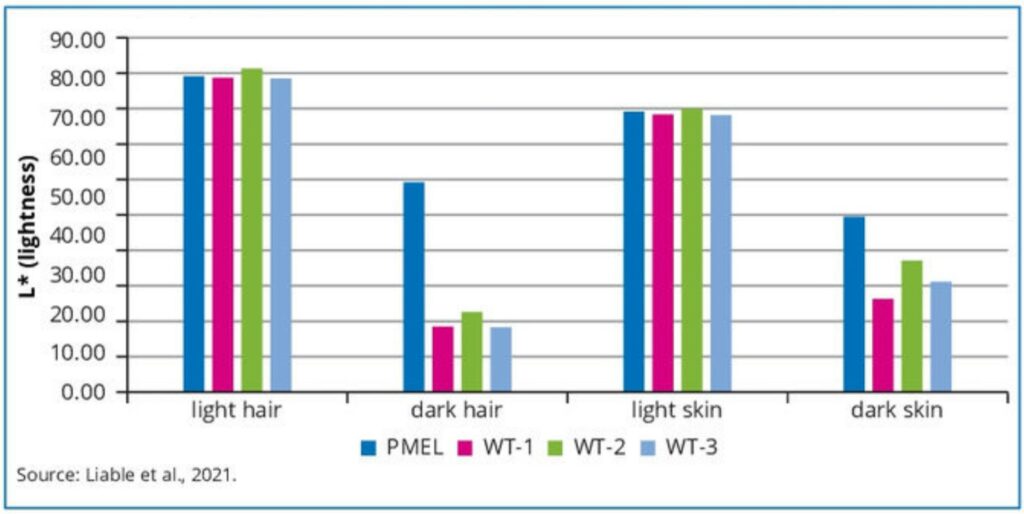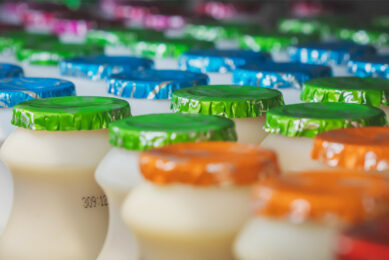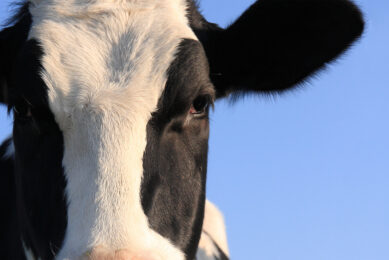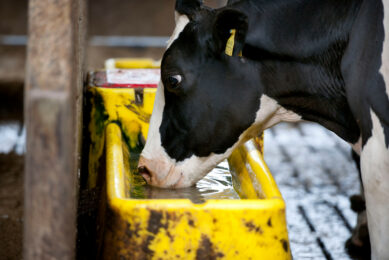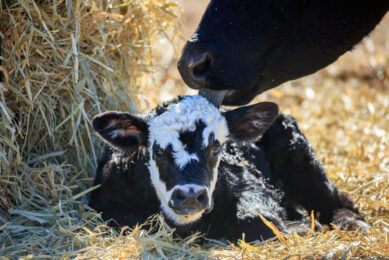Gene editing: Coat colour for better heat tolerance
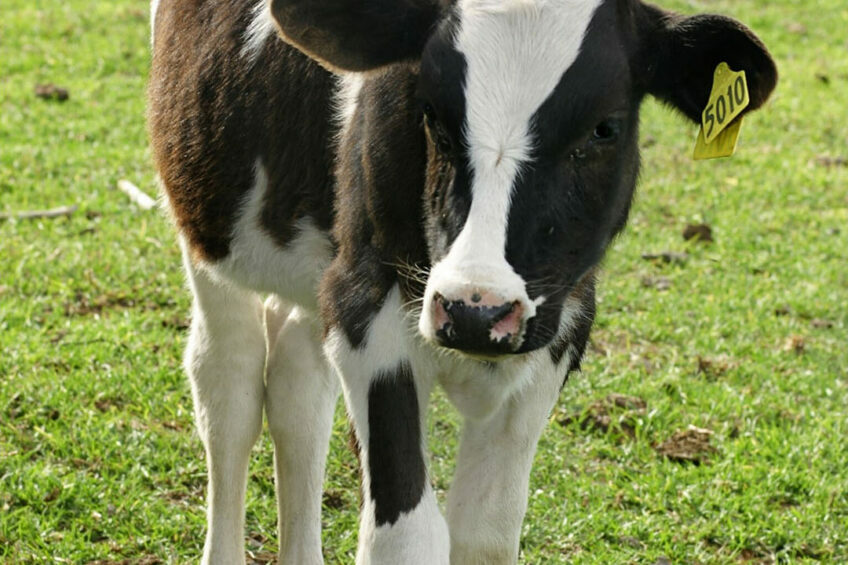
Genome editing has been found to be a valuable tool for lightening the hair and coat colour to better adapt dairy cattle to rapidly changing climatic conditions.
These are the findings by researchers from the AgResearch Centre in New Zealand. High-producing Holstein Friesian dairy cattle have a characteristic black and white coat, often with large proportions of black. Compared to a light coat colour, black absorbs more solar radiation translating into radiative heat gain which is a contributing factor to heat stress in cattle, negatively affecting their production levels, fertility and welfare.
The genome editing targeted the pre-melanosomal protein 17 (PMEL) gene. PMEL is a membrane protein that is exclusively expressed in pigmented cells where it is involved in the maturation of melanosomes, and pigment deposition and polymerisation in these organelles. Mutations in PMEL are associated with black pigment dilution in several species but are found in different parts of the protein.
In their study, the researchers stated that, in different species, PMEL mutations were shown to be responsible for colour dilution effects. For example, they said a deletion of a leucine codon in the signal peptide (p.Leu18del) of PMEL segregates in Highland, Galloway and Tuli cattle and has been proposed as a causative mutation for coat colour effects. “While the role of this variant has not been functionally confirmed, its proposed coat colour impacts make it an excellent candidate for introgression into Holstein Friesian dairy cattle to reduce radiative heat gain and improve overall heat tolerance,” they said.
Generation of edited calves
In this study, the researchers used the gRNA/Cas9-mediated introgression of the naturally occurring mutation p.Leu18del in the PMEL gene, known from Galloway and Highland cattle, into Holstein Friesian cattle. Using gRNA/Cas9-mediated editing, they introduced a 3 base pair deletion in the PMEL gene proposed as the causative variant responsible for the semi-dominant colour dilution phenotype seen in Galloway and Highland cattle.
Calves homozygous for the PMEL mutation displayed distinct colour dilution to a silvery grey of the otherwise black coat markings in the control calves. They used a cloning method to create embryos set to be genetically modified and applied the gRNA/Cas9-mediation, the CRISPR tool, to mutate the PMEL gene. After 7 days in vitro culture, single embryos were non-surgically transferred to synchronised recipient cows for development.
To determine the phenotypic impact of the PMEL mutation, they used somatic cell nuclear transfer to generate calves with donor cells from the biallelic cell clone CC14 and the parental WT cell line BEF2. Following transfer of reconstructed embryos, a total of 7 pregnancies were detected at day 37 of gestation. For each genotype, one pregnancy failed, resulting in the birth of 2 PMEL mutant calves and 3 control calves. Once the 2 calves were born, the team confirmed that what should have been black markings were silvery grey – and white areas remained unaffected.
Coat and skin colour
Calves generated from cells homozygous for the edited mutation revealed a strong colour dilution effect. Instead of the characteristic black and white coat colour patterning of control calves generated from unedited parental cells, the edited calves displayed a novel pattern of grey and white markings and absence of any black areas. This, for the first time, verified the causative nature of the PMEL mutation for diluting the black coat colour in cattle.
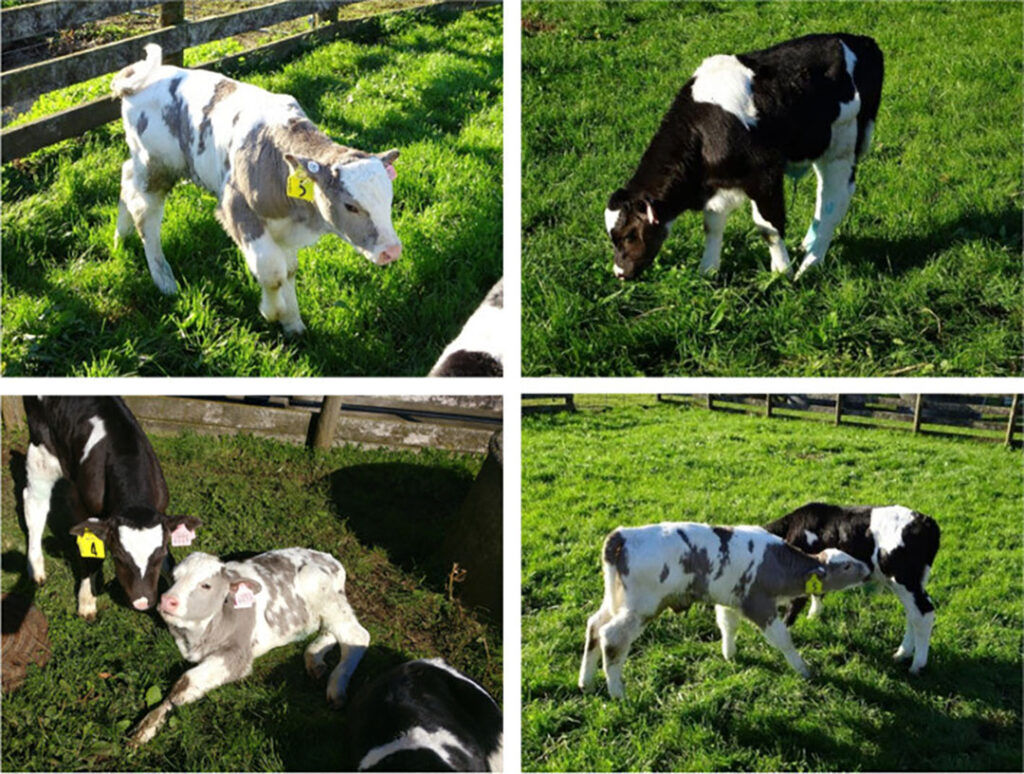 In addition, the scientists stated that there was not only a general colour dilution of black markings but a marked difference in the distribution and patterning of dark and white coat markings. “The PMEL mutant calf had a larger total area of white markings and a characteristic white face compared to the control calves that were predominantly black with a black face and a white diamond shape on the forehead,” they said.
In addition, the scientists stated that there was not only a general colour dilution of black markings but a marked difference in the distribution and patterning of dark and white coat markings. “The PMEL mutant calf had a larger total area of white markings and a characteristic white face compared to the control calves that were predominantly black with a black face and a white diamond shape on the forehead,” they said.To quantify the colour dilution effect caused by the PMEL mutation, colorimetric measurements of hair and underlying skin colour were taken from the 3 control calves and the viable PMEL calf. The characteristic measured was the lightness of the colour expressed as an L* value according to the CIELab colour scheme, which defines the lightness of white as 100 and black as zero. The colour shade of the white hair of the PMEL calf was similar to control calves. In contrast, the shade of the dark hair had a higher lightness value for the PMEL calf (L*=53.8) compared to the 3 WT control calves (L*=16.8, 20.5 and 16.5). To assess any associated changes in the pigmentation of the underlying skin, lightness was measured for the skin below white and dark-haired coat markings. The skin colour below the hair showed a similar trend to hair colour.
Figure – Colour dilution effect on hair and skin colour of edited (PMEL: calf edited for the p.Leu18del PMEL mutation); and control calves
Concerns for safety, traceability and ethics
Studies show that the safety and traceability assessment of products derived from transgenic and gene-edited cattle may be complex. In one study, researchers from Wageningen University stated 2 main limitations of gene editing: first of all, as the modifications may be minor it may not be possible to distinguish these genetic alterations from similar changes in animal genomes that may occur naturally over time. Secondly, as these animals may not be subject to approval systems in different parts of the world, the details of the genetic modifications may not be shared in common databases, thus severely hampering the options of effective traceability of the respective animal lines and breeds and related products in other countries where traceability would be a requirement. They added that, besides ethical issues, genetic engineering brings with it concerns over intellectual property and patenting of created animals and/or the techniques used to create them.
Model to study heat tolerance
According to the scientists using genome editing to lighten hair and coat colour, this is the first example that has functionally confirmed the causative status of a mutation for a coat colour phenotype in cattle. “The edited genotype now represents a valuable model to study the impacts on heat tolerance and determine any potential effects it might have on reproductive performance, milk production characteristics and resilience to diseases associated with exposure to sunlight.”
They added, “Although we have demonstrated it for a dairy breed, the strategy could be readily applied to beef breeds such as Black Angus. Overall, our study exemplified and validated genome editing as a promising new approach for the rapid adaptation of livestock to changing environmental conditions.”
This article is based on the original article by G. Laible, S.-A. Cole, B. Brophy, J. Wei, S. Leath, S. Jivanji, M.D. Littlejohn and D.N. Wells. 2021. Holstein Friesian dairy cattle edited for diluted coat color as a potential adaptation to climate change. BMC Genomics 22:856. https://doi.org/10.1186/s12864-021-08175-z
Join 13,000+ subscribers
Subscribe to our newsletter to stay updated about all the need-to-know content in the dairy sector, two times a week.


